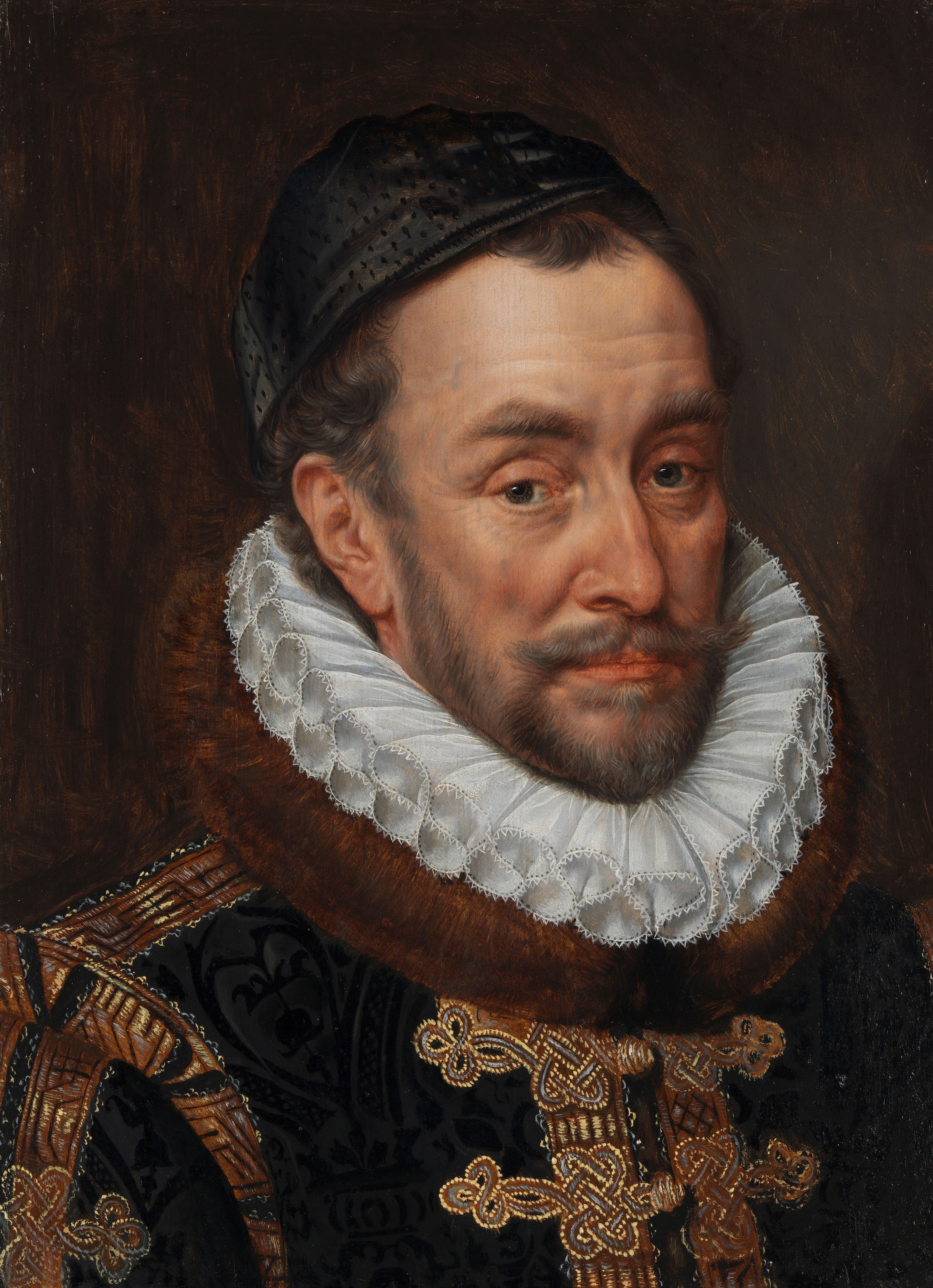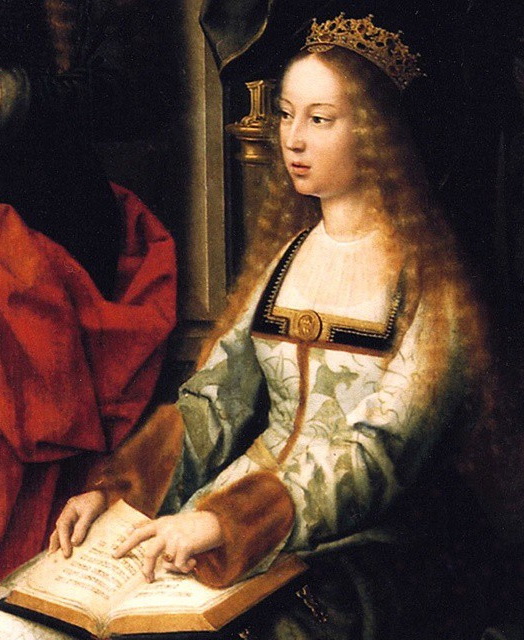by Susan Flantzer
© Unofficial Royalty 2025

Gustav I Vasa, King of Sweden, founding father of the modern Swedish state, reigned 1523 – 1560; Credit – Wikipedia
It is not known exactly when the Kingdom of Sweden started. Sweden’s list of rulers usually begins with Eric the Victorious, who lived circa 945 to circa 995. Denmark, Sweden, and Norway were ruled together under one monarch from 1397 until 1523 when Danish rule was overthrown in a rebellion led by nobleman Gustav Vasa, who became King Gustav I of Sweden. In 1814, during the Napoleonic Wars, Denmark lost Norway to Sweden. Eventually, in 1905, the union between Sweden and Norway was dissolved and Norway became its own kingdom.

King Carl XIV Johan of Sweden, the first of the House of Bernadotte, which still reigns in Sweden; Credit – Wikipedia
The current Swedish Royal Family are members of the House of Bernadotte. In 1809, King Carl XIII ascended the throne of Sweden. He had no living children, and his adopted son and heir died the following year. The Swedes had the idea to offer the position of Crown Prince to Jean Baptiste Bernadotte, one of the Marshals of Napoleon I, Emperor of the French. Bernadotte was well-liked in Sweden, particularly because of his considerate treatment of Swedish prisoners during the recent war with Denmark, and he had a son who could continue the succession. In 1810, the Swedish Riksdag elected Bernadotte as Crown Prince. Shortly afterward, he arrived in Stockholm, was formally adopted by King Carl XIII, taking the name Carl Johan, and converted from Roman Catholicism to Lutheranism. When King Carl XIII died in 1818, Bernadotte ascended the throne as King Carl XIV Johan. Thus began the Bernadotte dynasty in Sweden, which continues today.
King Carl XIV Johan’s son and successor King Oscar I married Princess Joséphine of Leuchtenberg, the granddaughter of Napoleon I’s first wife Empress Joséphine and her first husband Alexandre, Vicomte de Beauharnais. Princess Joséphine’s mother was Princess Augusta of Bavaria, a descendant of King Gustav I of Sweden and King Karl IX of Sweden. The marriage ensured that future members of the House of Bernadotte were descendants of the House of Vasa, which ruled Sweden from 1523 to 1654.
Royal House and Royal Family
Members of the Swedish Royal House are closely related to the monarch and are covered by the provisions of the Constitution and the Order of Succession regarding religion, approved marriages, and the upbringing of children in Sweden. They perform official engagements and ceremonial duties. At present, members of the Swedish Royal House include the monarch and his/her spouse, the Crown Prince or Crown Princess and their spouse if the spouse has accepted a royal title, the Crown Prince or Crown Princess’ eldest child, and the monarch’s other children and their spouses if they accepted a royal style.
Members of the Swedish Royal Family include the members of the Swedish Royal House, family with royal titles and style who perform no official engagements, and extended family who are not dynasts. Currently, this includes the children of Prince Carl Philip and Princess Madeleine and the sisters of King Carl XVI.
The Swedish Monarch
The Swedish monarch is styled His Majesty King <name> or Her Majesty Queen <name>. His Majesty King Carl XVI Gustaf is the current King of Sweden. Carl Gustaf’s regnal number XVI comes after his first name Carl to indicate that he is the 16th Swedish monarch to have the first name Carl or Karl.
The line of succession to the Swedish throne is determined by the 1810 Act of Succession and its amendments. In 1979, two years after the birth of Crown Princess Victoria, King Carl XVI’s first child, the Riksdag, Sweden’s legislature, introduced absolute primogeniture – the eldest child of the monarch, regardless of gender, is first in the line of succession. The change went into effect on January 1, 1980, making Sweden the first monarchy to adopt absolute primogeniture. The Swedish succession had previously been agnatic primogeniture – only males could inherit the throne. Carl Philip, King Carl XVI Gustaf’s second but first and only male child had been born Crown Prince of Sweden in 1979, and retained his title and first place in the succession for seven months until January 1, 1980, when his elder sister Victoria became Crown Princess and heir apparent.
In the spring of 1946, Princess Sibylla (born a Princess of Saxe-Coburg and Gotha), wife of Prince Gustaf Adolf of Sweden, was pregnant for the fifth time. The couple was parents of four daughters, none of whom could be in the line of succession due to the succession laws at that time. Prince Gustaf Adolf’s grandfather King Gustaf V was the reigning King of Sweden and his father, the future King Gustaf VI Adolf, was the Crown Prince. As his father’s eldest son, Prince Gustaf Adolf was second in the line of succession. On April 30, 1946, Princess Sibylla gave birth to a son, the future King Carl XVI Gustaf. The newborn prince was third in the line of succession to the Swedish throne after his grandfather and father. On January 26, 1947, when Carl Gustaf was only nine months old, his father died in an airplane crash, and Carl Gustaf became second in the line of succession behind his grandfather. Carl Gustaf’s great-grandfather King Gustaf V died on October 29, 1950, and his grandfather became King Gustaf VI Adolf while four-year-old Carl Gustaf became Crown Prince. When Carl Gustaf’s grandfather, King Gustaf VI Adolf, died on September 15, 1973, Carl Gustaf became King of Sweden at the age of 27.
The Swedish Royal Consort
The wives of Swedish kings have been styled Her Majesty and titled Queen <name> of Norway. The current consort is Her Majesty Queen Silvia of Sweden, born Silvia Sommerlath in Heidelberg, Germany.
There is no real precedent for the style and title of the husband of a reigning Queen of Sweden. Sweden has had three reigning queens. Margrethe I was the reigning Queen of Denmark, Norway, and Sweden, reigning in Denmark 1387 –1412, in Norway 1388 – 1412, and in Sweden 1389 – 1412). Her husband King Haakon VI was King of Norway (reigned 1343 – 1380) and King of Sweden (reigned 1362 to 1364). He died in 1380, before Margrethe became Queen of Denmark, Norway, and Sweden. Queen Christina of Sweden, reigned from 1632 until she abdicated in 1654, was unmarried.
Queen Ulrika Eleonora reigned 1719 – 1720. She wanted to reign jointly with her husband Prince Fredrik (born Prince Friedrich of Hesse-Kassel) as husband and wife and first cousins King William III and Queen Mary II had done in England, but the Swedish nobility rejected the notion. Frederik increased his influence on his wife and in state affairs and then reached out to the most powerful men in Sweden, who soon considered a change. Ulrika Eleonora wrote a letter to the Riksdag, the Swedish legislature, on February 29, 1720, informing its members of her desire to abdicate in favor of her husband on the condition that she should succeed him if he should die before her. The Riksdag confirmed the succession of Ulrika Eleonora’s husband and the condition of her abdication, which granted her place as the heir to the Swedish throne until her death. On March 24, 1720, Prince Fredrik acceded to the Swedish throne as Fredrik I, King of Sweden and Ulrika Eleonora became Queen Consort.
Prince Daniel of Sweden, born Daniel Westling in Örebro, Sweden, the husband of the heir to the Swedish throne, Crown Princess Victoria, will likely be the next royal consort. When his wife becomes Queen of Sweden, he will likely retain the same title and style – His Royal Highness Prince Daniel of Sweden, but there is the possibility that he could be created Prince Consort.
The Heir to the Swedish Throne – Crown Prince of Sweden or Crown Princess of Sweden
Her Royal Highness Crown Princess Victoria is the current heir apparent to the Swedish throne. The wife of a Crown Prince is Her Royal Highness Crown Princess <name>, but not the husband of a Crown Princess. Crown Princess Victoria’s husband, born Daniel Westling in Örebro, Sweden, is styled His Royal Highness Prince Daniel of Sweden.
Prince and Princess
In general, the children and grandchildren of the Swedish monarch are Prince and Princess. In addition, it is common for Princes and Princesses of Sweden to receive ducal titles, which are discussed below. The children of the Swedish monarch and their spouses, if the spouse accepted a royal title, are His/Her Royal Highness Prince or Princess of Sweden. The reason Christopher O’Neill, Princess Madeleine’s husband, does not have a royal title is that a member of the Swedish royal house needs to be a Swedish citizen and not hold any position of responsibility in business. At the time of his marriage, Christopher O’Neill, an American and British citizen, said, ” To continue my career is really important for me. I chose to not receive a title that would have prevented me from my dream of continuing my work. Of course, I consulted with Madeleine and the King and Queen. It was important for me to have their blessing.”
At birth, the children of Prince Carl Philip and Princess Madeleine, King Carl XVI Gustaf’s two youngest children, were styled as Royal Highness Prince and Princess and were members of The Royal House. However, on October 7, 2019, the Swedish Royal Court announced that King Carl XVI Gustaf decided to make changes regarding the styles of the children of Prince Carl Philip and Princess Madeleine. It is unknown whether these changes will become the practice in subsequent reigns.
As of October 7, 2019, the children of Prince Carl Philip and Princess Madeleine were no longer members of The Royal House but would continue to be members of The Royal Family. However, the two children of Crown Princess Victoria, Her Royal Highness Princess Estelle and His Royal Highness Prince Oscar, retain the styles and titles they received at birth and remain members of the Royal House.
The children of Prince Carl Philip – Prince Alexander and Prince Gabriel – and the children of Princess Madeleine – Princess Leonore, Prince Nicolas, and Princess Adrienne – are no longer styled Royal Highness but they retain their titles of Duke and Duchess previously granted by King Carl XVI Gustaf and they remain in the line of succession to the Swedish throne. In the future, they will not be expected to perform any royal duties and will not receive the taxpayer-funded annual sum known as appanage. They are styled Prince/Princess <Name>, Duke/Duchess of <Geographical Area>. For instance, Princess Madeleine’s eldest child, born in 2014, is now styled Princess Leonore, Duchess of Gotland.
King Carl XVI Gustaf made this decision before the children of Prince Carl Philip and Princess Madeleine reached school age. Swedish law states that all members of The Royal House must attend school in Sweden and must be raised with Evangelical Lutheran teachings. Also, members of The Royal House may not start a business or be employed. King Carl XVI Gustaf wanted to provide the children of Carl Philip and Madeleine, unlikely to succeed to the throne, greater independence and make them less bound by the rules that govern princes and princesses.
Ducal Titles
In the 13th and 14th centuries, Kings of Sweden from the House of Bjälbo began to give their sons hereditary duchies to rule as fiefs. However, because the boundaries of these duchies were unclear, feuds between family members were common, sometimes ending in murder. This practice of giving hereditary duchies was discontinued during the Kalmar Union (1397 to 1523) when a single monarch ruled Denmark, Sweden, and Norway.
King Gustav III of Sweden (reigned 1771 – 1792) revived the practice by giving male heirs to the Swedish throne ducal titles of Swedish provinces. These Swedish duchies were named for the historical provinces of Sweden, which were no longer governmental entities. The titles were given at birth and were non-hereditary courtesy titles without any ruling privileges. Since 1980, ducal titles have been given to all royal heirs, male and female, and are kept for life, except for Swedish monarchs, who do not continue to hold ducal titles. The wives of royal dukes have always shared their husbands’ titles, and the husbands of royal duchesses have shared them since 2010. The current ducal titles can be seen at Wikipedia: Duchies in Sweden Today.
This article is the intellectual property of Unofficial Royalty and is NOT TO BE COPIED, EDITED, OR POSTED IN ANY FORM ON ANOTHER WEBSITE under any circumstances. It is permissible to use a link that directs to Unofficial Royalty.
Works Cited
- Bidragsgivare till Wikimedia-projekten. (2004). monarkins institutionella roll i Sverige. Wikipedia.org; Wikimedia Foundation, Inc. https://sv.wikipedia.org/wiki/Sveriges_monarki
- Flantzer, Susan. (2014). King Carl XVI Gustaf of Sweden. Unofficial Royalty. https://www.unofficialroyalty.com/april-30-1946-birth-of-king-carl-xvi-gustaf-of-sweden/
- Flantzer, Susan. (2014). Prince Carl Philip of Sweden. Unofficial Royalty. https://www.unofficialroyalty.com/prince-carl-philip-of-sweden/
- Hofverberg, Elin. (2022, December 14). The Shrinking Royal Houses of Scandinavia | In Custodia Legis. The Library of Congress. https://blogs.loc.gov/law/2022/12/the-shrinking-royal-houses-of-scandinavia/
- Swedish King Carl Gustaf removes grandchildren from royal house. (2019, October 7). https://www.bbc.com/news/world-europe-49958085
- Wikipedia Contributors. (2025). Duchies in Sweden. Wikipedia; Wikimedia Foundation.
- Wikipedia Contributors. (2019). Monarchy of Sweden. Wikipedia; Wikimedia Foundation. https://en.wikipedia.org/wiki/Monarchy_of_Sweden
- Wikipedia Contributors. (2025). Swedish Royal Family. Wikipedia; Wikimedia Foundation.










